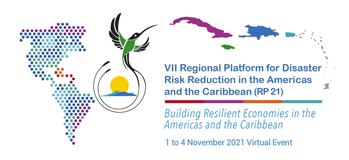Anticipating disasters saves lives and livelihoods, Americas conference told
Better weather and other forecasting systems and methods make it increasingly possible to see disasters coming before they strike, whether floods, hurricanes or earthquakes, opening the way to anticipatory action that can save many lives and livelihoods.
“Why wait. Why watch the train coming and not move people out of the way,” asked Shelley Cheatham, Head of Office, UN OCHA Regional Office for Latin America and the Caribbean at a session on anticipatory and forecast-based social protection systems during a virtual conference on disaster risk reduction in the Americas and the Caribbean.
Most disasters strike without warning. But more than 20 per cent can be predicted and early action can prevent them from turning into full-blown catastrophes. Investment to mitigate potential disaster risks and prepare communities to manage them can also save disaster response costs. However, despite the advantages of early action, only one per cent of humanitarian aid goes to financing such steps, the conference heard.
The session on anticipatory action plans came on day three of the Vll Regional Platform on Disaster Risk Reduction in the Americas and the Caribbean, being hosted by Jamaica 1-4 November. The platform is taking stock of the region’s implementation of the Sendai Framework, the global blueprint for disaster risk reduction approved in 2015.
Experts from the United Nations Office for the Coordination of Humanitarian Affairs (OCHA), the International Federation of Red Cross and Red Crescent Societies (IFRC), the Center for Natural Disaster Prevention in Central America (CEPREDENAC), the General Directorate of Civil Protection and European Humanitarian Aid Operations (ECHO) and the Food and Agriculture Organization (FAO) shared examples of best practices and examined the challenges to extending the use of anticipatory action.
The Red Cross has several pilot projects aimed at moving the traditional response paradigm of humanitarian action towards a system of forecast-based financing that anticipates disasters and reduces human suffering and loss, explained Mathieu Destrooper, Regional Anticipation Advisor for the Red Cross, Latin America and Caribbean.
It is critical to have an early action plan that assesses risk, based on forecasts, and defines the likely impact level. Anticipated actions must be linked to a financing mechanism, such as a contingency fund or index-based insurance, that is ready to pay out quickly. As an example, the Red Cross helped local rural families in central Ecuador in September 2020 when the Sangay volcano began to spew ash. Prompt assistance to farming communities meant that they were not obliged to sell off their livestock at knockdown prices to survive.
“Anticipation and forecasts are key in the face of emergencies,” said Claudia Herrera,
Executive Secretary of CEPREDENAC. “That is why we insist on the development of mechanisms and tools to shed light on vulnerabilities and to identify the characteristics of (disaster) threats … mitigating existing risks and enhancing resilience,” she said.
CEPREDENAC has an information coordination platform that aims to strengthen decision-making and develop educational tools and technologies to monitor threats and assess capacities to respond to disaster.
Disasters are having a greater impact in the Americas and Caribbean region, generating increased poverty and hunger, said Raquel Peña, Emergencies and Resilience Specialist at FAO Regional Office for Latin America and the Caribbean. According to FAO studies, anticipatory action offers a good return on investment for communities.
Daniela Cuellar, Humanitarian Affairs Officer, detailed how OCHA has been working on making humanitarian relief more anticipatory, with some $140 million set aside to support such interventions. So far 12 projects have been launched, mainly in Africa and Asia, involving risks from droughts to disease. Anticipatory action is improving the quality of programmes, making the targeting of assistance more precise, and strengthening collaboration between aid agencies, she added.
Anticipatory action is a top priority for ECHO, said Alvaro Vicente, Chief, Regional Office for Latin America and the Caribbean.
Scaling up anticipatory actions and ensuring that they are fully integrated into disaster risk management approaches is one of the key challenge, panellists agreed. “This is the only way to move from pilot project to bigger scale,” concluded Shelley Cheatham. “We need this approach inside national plans and institutions”.

